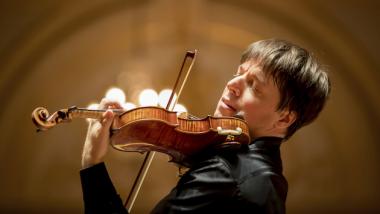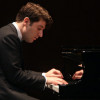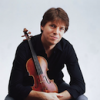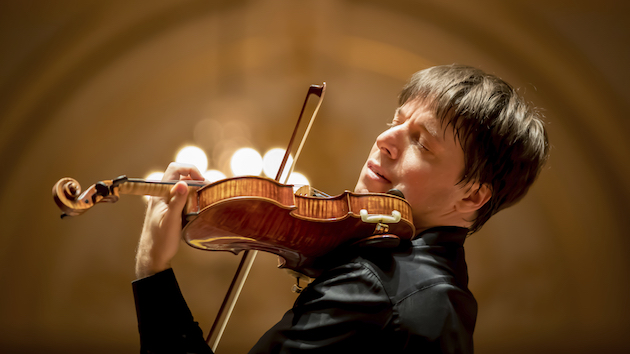
I had never sat behind the performers at a violin-and-piano recital until Friday’s Stanford Live event featuring Joshua Bell and Alessio Bax. Being seated with the violinist facing away, and the piano lid blocking both view and sound, does not seem appetizing.
However, on this occasion that was less of a burden than it might have been. One reason is that the venue was Bing Concert Hall. Bing is an outstanding in-the-round concert venue. While it has its sweet spots and some sour ones, the sound quality is far more evenly balanced across the auditorium than in other halls, even those of its vineyard-terrace acoustic design. I found that while the tone was somewhat muffled in intensity and vividness, it was not at all distorted, which in many halls it would be.
A second reason is Joshua Bell, famous as the violinist who will not stand still. He did not wander around the stage as he sometimes does when playing concertos with an orchestra. Here he was more rooted to one spot, if only because he played three of the concert’s four works with the printed music. But he did frequently turn most of the way around, if only to keep an eye on Bax at the keyboard behind him.
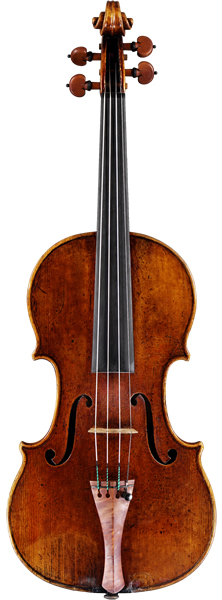
Consequently, not only did the audience in the rear terrace at Bing have a good show, so did the over 150 people in chairs on the stage risers, which Stanford Live added to the house to increase capacity for this sold-out concert. In the middle of the second row on stage, I was closer to the piano than I have ever been other than at a house concert, yet the sound was clear and balanced.
The performance was well worth any seat in the auditorium. Playing the famous Gibson-Huberman Stradivari (which Bell acquired after it reappeared 65 years after being stolen from Bronislaw Huberman’s dressing room at Carnegie Hall), Bell showed a mastery of variety of tone quality within a generally unified sound. He also demonstrated an exquisite command of line and phrasing. Every melodic turn was eloquently expressed.
This resulted in as thoughtful a performance of César Franck’s Sonata in A Major as is likely to be heard. In a way, though, Bell was even more impressive in Schubert’s Rondo in B Minor, D. 895 (“Rondeau brillant”), because he was equally charming with so much less to work with. The Rondo is not Schubert’s best. It’s a florid and garrulous piece, frequently emitting elaborate cadences which prove not to be the end. Bell played each theme with a light, tingly reserve and every bit of melodic dedication he could summon. His sound formed a crunchy mix when in unison with Bax’s ringing high phrases.
In both the Schubert and in Bach’s Sonata in C Minor, BWV 1017, Bell gave a push to long held notes, digging in with greater intensity as the note lasted, and he did similarly with some continuous phrases of quick notes. Variation of intensity, with some cadences eliciting flashes of gritty bowing, while other closing phrases gently faded away, divorced the Bach from impersonal formality and gave it individual character, in the same way that the Schubert had been rescued from its fussiness. Here Bax padded along comfortably in elaborate but usually quiet accompaniment.
In this context, Bell’s part in the Franck Sonata became a varied emotional adventure. He began the work with tentative, questing phrases, then built up to a level of assumed confidence. After the mild and restrained middle section of the second movement, Bell suddenly unleashed a vividly dramatic buildup to return to the stronger opening mood. The recitative in the third movement was boldly declamatory, evoking Bach’s solo violin work. Here and in the canonic finale, Bell’s shaping of repeating and varying lyric phrases was particularly driven and effective.
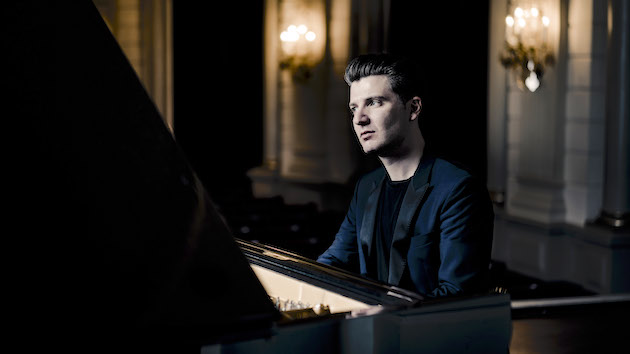
Meanwhile, Bax at the piano was setting his own tone for the Franck. His opening of the work was softly lush, placing the sonata firmly on the harmonic line between Wagner’s Tristan and Debussy. Elsewhere, his evenly paced playing kept a firm base on the music as he did in the Bach.
Bell concluded the scheduled program with Eugène Ysaÿe’s unaccompanied Sonata in D Minor, Op. 27, No. 3, a work seemingly designed to throw off as many tone colors as possible within a generally cohesive framework. Then he brought Bax back on stage with him for a suite of encores: a Romance by Clara Schumann, a Scherzo and Tarantella by Henryk Wieniawski, and Bell’s own arrangement of Chopin’s Nocturne in E-flat, Op. 9, No. 2, which last work he played with lavish rubato and an indulgent tone like melting chocolate decadence.

